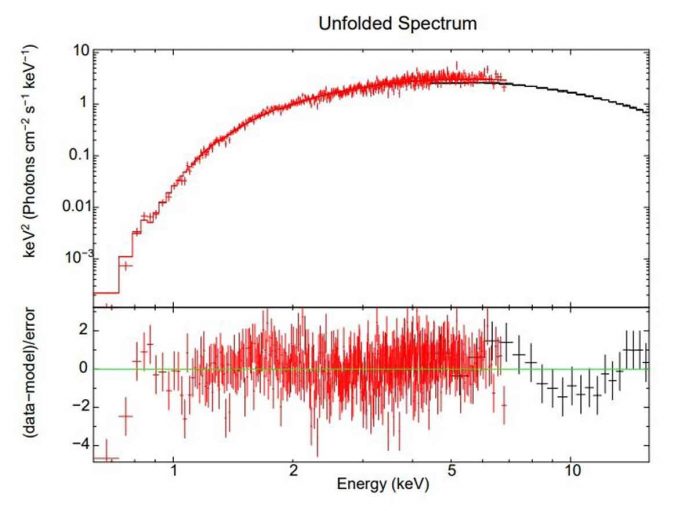Indian astronomers used the AstroSat spacecraft to investigate GX 3+1, a low-mass X-ray binary. The research provided more information about GX 3+1’s properties and detected a thermonuclear burst from this source. The findings are detailed in a paper published on arXiv.org on June 15.
X-ray binaries are typically made up of a normal star or a white dwarf transferring mass to a compact neutron star or a black hole. Astronomers classify them as low-mass X-ray binaries (LMXB) or high-mass X-ray binaries (HMXB) based on the mass of the companion star (HMXB).
LMXBs can have transient outbursts that cause an increase in X-ray luminosity. Some of these outbursts are classified as type I X-ray bursts, which are thermonuclear explosions that occur on the surface layers of neutron stars.
GX 3+1, discovered in 1964, is a persistently bright X-ray binary source classified as a LMXB of atoll subtype with a soft spectrum ranging from 2 to 10 keV. The first type I burst from GX 3+1 was detected in 1983, and this source has since been discovered to be a very active X-ray burster, with bursting activity examined by numerous studies.
However, many of this LMXB’s properties are still unknown. That is why, led by Ankur Nath of Tezpur University in India, a team of astronomers decided to examine GX 3+1 using AstroSat’s Large Area X-ray Proportional Counter (LAXPC) and Soft X-ray Telescope (SXT).
“In this paper, we describe an AstroSat observation of the bright atoll source LMXB GX 3+1. The light curve obtained from the LAXPC 20 [one of three LAXPC counters] instrument revealed the presence of a type I thermonuclear burst feature “The researchers wrote about it in their paper.
The observations detected one type I thermonuclear burst lasting approximately 15 seconds, according to the study. When the narrow energy bands become harder, the count rate in the light curve of the X-ray burst decreases. The burst was found to be the brightest in the 5-8 keV energy band, with a higher count rate than the softest band (3-5 keV). Furthermore, it was discovered that the burst decayed faster at higher energies, implying that the temperature is decreasing as the burst evolves.
The astronomers discovered a double-peak feature in the burst at higher energies (8-12 keV, 12-20 keV) by analysing the data. This was a brief event, lasting only about two seconds, during which the burst displayed the double peak, indicating a radius expansion phase.
“We claim that the detected burst is a photospheric radius expansion (PRE) burst based on our time-resolved spectroscopy,” the researchers concluded.
The data collected allowed the team to estimate the Eddington luminosity of GX 3+1, which was discovered to be 287 undecillion erg/s. The study also narrowed down the distance to this system, concluding that it is most likely 30,300 light years away.

